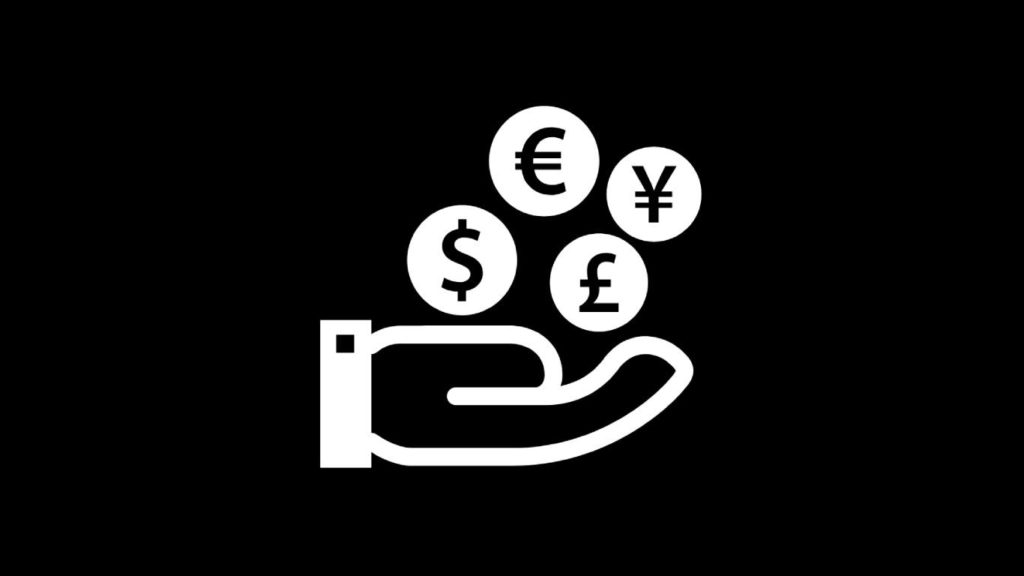
Finances, which provided the foundation for communities from the dawn of humanity, are the basis on which the world’s governments operate today. Of course, its primitive origins included the trading of goods rather than currencies. Other terms we know today, such as debt, investment, or market, also existed in the archaic form. They are the building block of modern financial theory, which draws from mathematics, economics, management, accountancy, and experimental and behavioral finance. With your interest hopefully piqued, let’s jump straight into key aspects of financial technology.
What is financial technology?
Financial technology, or FinTech for short, represents innovation and technology whose goal is competition with, and eventual replacement of, traditional methods in the distribution of financial services. It includes processes, products, applications, solutions, and business models, more often than not provided as an end-to-end procedure over the Internet. The majority of financial technology examples stem from new business ideas in renowned financial establishments.

However, an increasing number of emerging technologies stem from startups e.g., new businesses. These financial technologies have a shared purpose – improving the user experience, saving time, boosting productivity, and increasing the institution’s revenue.
Examples of financial technology
Here are some of the prominent representatives of financial technology:
Digital and mobile banking
We discussed when we talked about modern technologies in banking. They combine hardware (mobile devices, ATMs, computers, and even smart cars), and software (API (application programming interface), programs, and applications), deployed in devices or the cloud. The goal is simple – convenient and secure access to finances from any place on Earth.
Blockchain and cryptocurrencies
Blockchain has been the talk of the entire world in recent years due to its decentralized nature. It eliminates both the need for a middle-man and reliance and confines of a single country’s currency or its conversion. This makes transactions near-instantaneous, available worldwide, with no transaction costs or close to it.
Most importantly, it boosts security, since transactions are encrypted and immune to the influence of third parties. We took a deeper dive into it when we mentioned it as an example of information technology.
Robotic process automation (RPA)
Robotic process automation (RPA) is a technology that relies on software robots and digital workers powered by Artificial Intelligence (AI). Operating in a virtual environment, they automate tedious and repetitive tasks using an API and/or a scripting language. Most importantly, RPA provides a GUI (Graphical User Interface) responsive to user input.
This allows for loading biometrics (fingerprints, magnet tape, facial recognition, etc.), and other forms of authentication. Thus, the system is cost-effective, accurate, consistent, faster, easily scalable, and better protected. It reduces the chance of impersonation, human error, scamming, and screen scraping.
Robots in Customer Service, also named chatbots, have proven to be dramatically cheaper compared to traditional alternatives. Because they each have a virtual workstation, they can provide pre-programmed answers 24/7/365. They only route the request to human employees if they cannot provide a solution, which saves time and effort on both ends. Robots can also send invoices, smart (digital) contracts, notifications, reminders, and handle the feedback data by entering it into one or more applications, such as bookkeeping systems.
Estimation and management
Financial institutions are starting to wisen up and implement machine learning, big data, and AI. In doing so, they shrink wasted time and boost efficiency and accuracy at estimation and management of finances. For example, JPMorgan uses AI to go over commercial loan agreements and approve, deny, or send them for further review. By their estimation, seconds of work AI performs replace close to 360,000 hours of their lawyers’ time annually.
Many of the world’s leading banks are also intertwining AI and HPC (High-Performance Computing). By achieving low latency and high bandwidth in computing, they can analyze and process market conditions in real-time. Do this allows financial institutions to adapt to nanosecond-short trading windows.
Application of financial technology
The following are some of the areas that benefit from financial technology:
Replacing jobs
We analyzed how technology impacts the job market, then shifted our focus to the negative (for some) aspect – ways technology replaces jobs. In it, we mentioned that, by estimates of The Bureau of Labor Statistics in the United States, 8% of the bank teller jobs will be cut by 2026. Reading that article and cross-referencing it with this one, you’ll quickly spot the similarities.
Jobs of financial analysts, advisors, journalists, and editors, mortgage and insurance agents, clerks, security guards, some lawyers, stock traders, stockbrokers, customer service employees, human resource representatives, on-premises cybersecurity experts, and bank managers will be replaced by technology in one form or another.
Banking as a Service (BaaS)
Top financial organizations implement Banking as a Service (BaaS), a model that allows renting their API to other establishments, usually other banks or third-party service providers (TPSP). This allows them to earn extra money by individually offering each function of their financial system to others, boosting the level of overall technological advancement.
Moreover, by leasing their infrastructure to others, they allow FinTech startups, big holding companies, retailers, and venture capital firms to improve framework elements and, potentially, invent and implement new ones.
Globalization
We talked about the beneficial applications of technology in globalization in the past. During that time, we concluded that interconnecting financial establishments amongst its subsidiaries and other organizations, friendly or adversaries, helped immensely. Then came the rise of online marketplaces such as Amazon, eBay, AliExpress, and Newegg, accompanied by multiple ways of online shopping, all relying on financial technology.
COVID-19 pandemic also provided a test of how far financial distribution and management came. It laid the groundwork for digital transactions and authentication, and facilitated sharing and utilizing industrial and academic resources worldwide.
Data security
AI, big data, and machine learning play a key role in data security nowadays. More specifically, three systems do – fraud detection and prevention, AML (Anti-Money Laundering), and KYC (Know Your Customer). Algorithms analyze every transaction on the platform in real-time and generate decisions within milliseconds.
This can prevent malversation, but also provide suggestions regarding inefficient policies, potential exploits, possible money schemes, automated claim responses, risk mitigation, data breaches, and even account protection guidance to each user individually.
Types of Fintech Products
The main aim of Fintech is to help people handle money in an easier and more efficient way. There are plenty of ways it can be done. That is why different types of Financial technologies provide different tools and products to businesses and people for money handling. So, let us have a look at those Fintech types and services that are changing the way we deal with money.
Personal Financial Management (PFM)
PFM apps have been a very useful addition to the world of Fintech as they help users track their spending, create a budget and saving goals, and set bill reminders. Here is how you can use these apps to manage your money better:
- Track Spending: You can connect personal finance management apps with your bank accounts and credit cards. It will help you keep complete track of how much you are spending and where you are spending your money. Every time you make a transaction, they will give you an instant notification, making you aware of your balance.
- Create a Budget: It is very easy to create a budget on the PFM app. There are options for setting your spending limits in different categories like food, entertainment, shopping, etc. And whenever you come close to crossing that limit, the app will notify you with an alert notification.
- Set Bill Reminders: If one thing that people hate about too much convenience, it is how lazy it makes us. We all forget to pay our bills on time because sometimes we think the apps will automatically make the payments! That does not really happen, but what can happen is you can set bill reminders on PFM apps. They will notify you whenever you are near the due date.
Fintech Lenders
Fintech lenders are those companies that make it much easier to get loan approval online. These companies or lenders use financial technology to approve your loans. And it is even much easier to apply for their loan as all you need is a phone or computer with a good network connection. Here is why Fintech lenders are much better than traditional banks:
- Easy Application Process: It is very easy to apply for a loan online as the websites or apps of Fintech lenders are user-friendly. All you need is to make a couple of clicks to apply for a loan. These lenders require you to follow a straightforward process and upload the necessary documents on their portal. It eliminates the hassle and time wastage of physical paperwork. Also, you get the approval much faster.
- Flexible Options: One of the best things about Fintech lenders is the diversity of load products they offer. Whether you need a small personal loan or a big home loan, you can expect a tailored solution available.
- Credit Building: If you have a bad or no credit history, using Fintech lenders can be of great help. By paying your loan on time, whether small or big, you can improve your credit scores over time. The better your credit score is, the faster your loan gets approved in the future.
Here is a quick comparison of the features and benefits between PFM apps and Fintech Lenders to help you summarize everything:
| Features/Benefits | PFM Apps | Fintech Lenders |
|---|---|---|
| Ease of Use | User-friendly interface for budgeting and tracking. | Easy online loan application process. |
| Functionality | Tracks spending, sets budgets, and bill reminders. | Offers diverse loan products and fast approvals. |
| Impact on Credit Score | N/A | Helps in building and improving credit scores. |
| Notifications/Alerts | Instant notifications for transactions and budget limits. | Notification of loan approval and repayment reminders. |
Sources
- Investopedia – https://www.investopedia.com/terms/f/fintech.asp
- Forbed – https://www.forbes.com/lists/fintech50/?sh=456e092318d3
- Economist – https://education.economist.com/courses/fintech